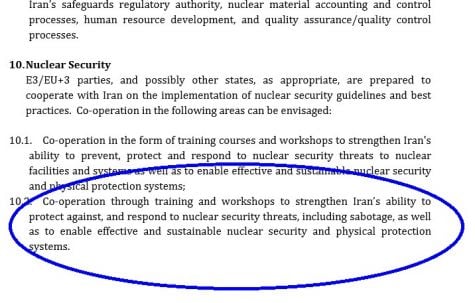Radical Islamists, have brought the fight right here to the Red, White and Blue and it’s about time we bring it to them. Full force. Let’s show them what the U.S. of A looks like up close and personal. Show ’em what a B1 bomber looks like flying overhead. Show ’em what they’re messing with. Put the fear of OUR God in their desert. Because clearly our lack of strategy isn’t working.
Month: July 2015


Which Candidate Receives The Most Money from Wall Street?
Another Campus Reform Hillary Bash! (See the previous one here)
Campus Reform Correspondent Cabot Phillips played “Candidates’ Cash” with young people on the national mall. After trying to guess which 2016 candidate has received the most money from four of Wall Street’s largest financial institutions, many of them were shocked to find out that the answer for all four was Hillary Clinton.

Ex-Atheist Kristin Shares Her Testimony ~ Tears
This video is a testimony by Kristin from Northridge Church. This video is part of the Ex-Atheist Testimonies.

More Democratic Racism and Segregation on Display
Gay Patriot notes the Democrat Party’s slouches toward open racism:
1. The Democrat Mayor of Kansas City brags about driving the white people out of his city. Can you imagine the outrage of another mayor had bragged that his city was better for having fewer black or Hispanic people in it? One notes, he said this at a convention for a group called “The Nation Council of the Race;” whose historical motto has been, “Within the race is all; outside the race is nothing.”
2. First Hillary and now dunderheaded Democrat candidate Martin O’Malley (the best governor Virginia ever had) have been attacked for saying “All lives matter.” O’Malley was forced to apologize for his gaffe of suggesting that the lives of members of other races mattered as much as black lives.
Powerline notes the radical aspects of the left and how this will affect the elections more than the “Trumps” in our party. We (and most of the candidates) rebuke Trump. Mums the word from the Democratic candidates:
…Steve wrote on Saturday about the rather shocking events at the annual “Nutroots” convention in Phoenix. Both Martin O’Malley’s and Bernie Sanders’s appearances were interrupted by “Black Lives Matter” protesters who, rather than being ejected from the hall, were invited to share the stage. These are the same bullies who invade restaurants in New York and other cities, shouting racial slogans at diners. This video is 22 minutes long, so you probably won’t want to watch all of it. But it is worth a few minutes of your time to see how crazy the scene was. It is the same kind of thing that worked so well for the Democrats in 1968.
Bernie Sanders responded grumpily, while O’Malley looked like he wished he was somewhere else. Toward the end of the video, when O’Malley responded to the protesters, he was shouted down when he suggested that criminal violence is worth mentioning, along with police violence. Most significantly, just after the 20 minute mark in the video, O’Malley said that “all lives matter,” including even “white lives.” This was greeted with howls of protest. Later on, someone apparently explained his mistake to O’Malley, and he apologized:
Later, when O’Malley was on “This Week in Blackness,” he apologized. O’Malley stated that he “meant no disrespect” and characterized his remarks as a “mistake.”
So in one of America’s two major parties, it is not permissible to say that “all lives matter.” Such a controversial sentiment is too hot to handle. The Democrats have gone off the deep end, and seem to be fully in thrall to their most extreme elements. Maybe there is an opportunity here for Hillary Clinton to show some political courage by denouncing her party’s far left. But when has Hillary ever shown political courage?
In the meantime, it is on the Democratic side of the aisle, not the Republican, where trouble is brewing that is likely to spill over into the general election next year.
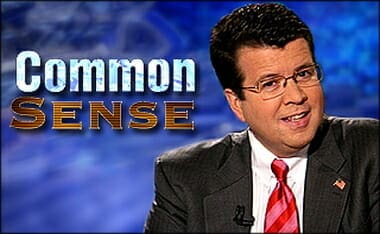
Greek Chickens Coming Home To Roost ~ Neil Cavuto
Via Moonbattery:

The Iran Deal and the Imperial Presidency ~ Mark Levin
Mark was superb. I wish he didn’t have an opportunity to be so superb… but our President offers much to use in this way. And so, this almost 23-minute clip should absolutely infuriate the proud American voter.
Notice I said “proud American voter.” In ither words, I doubt a Democrat would even frown slightly at this tragedy some call the Presidency of Barack Obama. Its VERY sad.
___________________________________________
For more clear thinking like this from Mark “the Great One” Levin… I invite you to visit: http://www.marklevinshow.com/
Here is the section of the Iran “treaty” Mark Levin ends with:
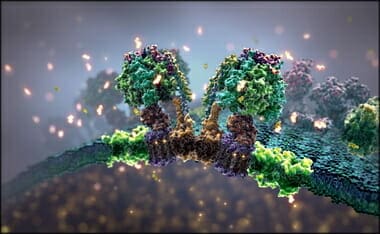
An Extended Quote From Jonathan Sarfati’s Must Have Resource
This is an extended quote from a MUST HAVE resource, The Genesis Account ~ for the seminarian or creation enthusiast (maybe a graduated-seminary student continuing his or her studies? of which I am). Again, this is not an introduction to the topic of “creation,” but rather a serious in-depth review of history, science, language, culture, theology and the Scriptures. [Two videos added to deepen understanding of molecular machines.]:
DNA: INFORMATION STORAGE, RETRIEVAL, AND TRANSMISSION
Not only do living things constitute enormously complex machines, they also contain the ‘instruction manual’ to build them—a sort of ‘recipe book’ programmed on DNA, the famous ‘double helix’ molecule (deoxyribonucleic acid). The information is stored in four different chemical ‘letters’: A T, C, and G.33 Plants and microbes also use the same DNA coding system.
These ‘letters’, or bases, have remarkable chemical properties. They are flat molecules, which allows them to stack as ‘rungs’ on a spiral staircase. This provides some stability, although see below. The letters of DNA have another vital property due to their structure, which allows information to be transmitted: A pairs only with T, and C only with G, due to the chemical structures of the bases—the pair is like a rung or step on a spiral staircase. This means that the two strands of the double helix can be separated, and new strands can be formed that copy the information exactly. The new strand carries the same information as the old one, but instead of being like a photocopy, it is in a sense like a photographic negative.
The copying is far more precise than random or laboratory chemistry could manage, because there is editing (proof-reading and error-checking) machinery, again encoded in the DNA. This machinery keeps the error rate down to less than one error per l07-108 letters).34, But how would the information for editing machinery be transmitted accurately before the machinery was in place? Lest it be argued that the accuracy could be achieved stepwise through selection, note that a high degree of accuracy is needed to prevent ‘error catastrophe’—the accumulation of ‘noise’ in the form of junk proteins specified by the damaged DNA.
DNA is unstable
DNA is a very complicated molecule, and actually a very unstable one. DNA researchers often need to store it in liquid nitrogen, at about —200°C, and even that frigid temperature doesn’t entirely stop breakdown. A recent paper on DNA stability estimates that, even when preserved in bone, it would be completely disintegrated in 22,000 years at 25°C, 131,000 years at 15°C, 882,000 years at 5°C; and 6.83 million years at —5°C.35 One article reported:
There is a general belief that DNA is ‘rock solid’—extremely stable,” says Brandt Eichman, associate professor of biological sciences at Vanderbilt, who directed the project. “Actually DNA is highly reactive. On a good day about one million bases in the DNA in a human cell are damaged.36
Fortunately, in our cells, we have many elaborate repair machines to undo this chemical damage.37 But most skeptics believe that life evolved in a primordial soup,38 which would have lacked such machines (not to mention the lack of any evidence that it existed at all39). So even if DNA managed to form spontaneously somehow, it would not have survived long.40
Encyclopedic information store
But even more important than the chemistry is the enormous information content of the ‘recipe’ stored on this DNA. This is transmitted from one generation to the next, so that living things reproduce ‘after their kinds’ (cf. Genesis 1). Leading atheist Richard Dawkins himself admits:
[T]here is enough information capacity in a single human cell to store the Encyclopedia Britannica, all 30 volumes of it, three or four times over.41
Nowadays we would say that each of our cells—and there are about a hundred trillion in the human body—contains about three gigabytes of information. Even the simplest living creature, the tiny germ Mycoplasma, has about 600 kilobytes.42 And even this seems incredibly highly compressed. Some bioengineers, led by Stanford University’s Markus Covert, succeeded in modelling this ‘simple’ germ with computers.43 One report on trying to model the processes involved in one cell division for this cell stated:
What’s fascinating is how much horsepower they needed to partially simulate this simple organism. It took a cluster of 128 computers running for 9 to 10 hours to actually generate the data on the 25 categories of molecules that are involved in the cell’s lifecycle processes.44
To return to the Britannica, the information is in the form of ink molecules on paper. But nothing in the ink molecules themselves made them form into the letters, words, phrases, sentences, and paragraphs of the Encyclopedia. It certainly wasn’t produced by an ink spill. Rather, the information was imposed on the ink by an outside intelligent source (or a program ultimately programmed by an intelligent mind).
But here is the connection with living things. There is likewise nothing in the chemistry of DNA’s letters themselves that would make them join up in predetermined ways, any more than forces between ink molecules make them join up into letters and words. Michael Polanyi (Hungarian: Polányi Mihaly, 1891-1976), a former chairman of physical chemistry at the University of Manchester (UK) who turned to philosophy, confirmed this:
As the arrangement of a printed page is extraneous to the chemistry of the printed page, so is the base sequence in a DNA molecule extraneous to the chemical forces at work in the DNA molecule. It is this physical indeterminacy of the sequence that produces the improbability of any particular sequence and thereby enables it to have a meaning—a meaning that has a mathematically determinate information content.45
Just as the Britannica had intelligent writers to produce its information, so it is scientific to believe that the information in the living world likewise had an original Writer.46
CELL MACHINES
Alex Williams, who was Australian representative to a research program coordinated by the UN’s International Atomic Energy Agency, explained this further in applying this to the cell machinery:
Polanyi pointed to the machine-like structures that exist in living organisms. … Just as the structure and function of these common machine components cannot be explained in terms of the metal they are made of, so the structure and function of the parallel components in life cannot be reduced to the properties of the carbon, hydrogen, oxygen, nitrogen, phosphorus, sulphur and trace elements that they are made of. There are endless examples of such irreducible structures in living systems, but they all work under a unifying principle called `autopoiesis’. Autopoiesis literally means ‘self-making’ (from the Greek auto for self, and the verb poieo meaning ‘I make’ or ‘I do’) and it refers to the unique ability of a living organism to continually repair and maintain itself—ultimately to the point of reproducing itself—using energy and raw materials from its environment.47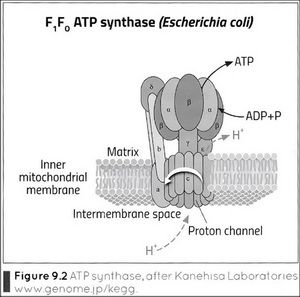
For example, for creatures to live at all, they need energy. This energy is supplied by a molecule called ATP.48 In fact, the human body generates—and consumes—about its own weight of ATP every day. Nowadays we know that ATP is produced by the world’s tiniest motor, ATP synthase.49 [First Video Below] This is only 10 nm across by 8 nm high—so tiny that 1017 would fill the volume of a pinhead. Even the journal Nature called these motors “Real engines of creation”.50 Recent work shows that it’s also the most efficient motor in the world—in fact as efficient as the laws of physics allow-100%.51
But for ATP synthase to work as a builder of ATP, it must be in a membrane that provides an electric potential that drives a proton current to power it. Without this membrane, ATP synthase would operate in reverse, as an ATP destroyer (all enzymes are reversible).
There are many more nano-machines in living things, for example, the kinesin linear motor [Second Video Below] that ‘walks’ along miniature highways in the cell, called microtubules. In 8-nm steps (125,000 per millimetre), at a rate of 100 steps per second, it delivers protein packages to the right place in the cell. It knows where to go because of address labels on the packages! Kinesin is powered by ATP: one molecule per step.52
Above Video
(Creation.com) This animated sequence shows the ATP Synthase enzyme in operation. The animation is based on an incredible series of scientific discoveries. Only the colours show artistic licence.
ATP, or Adenosine Tri-Phosphate, is the energy currency of the cell. ATP is produced by a tiny molecular rotary motor, rotating at up to 7,000 rpm. These are so small that 100,000 would fit side-by-side in a millimetre. A current of protons drives the motor, unlike man-made electric motors, which use electrons.
This portion of the enzyme is where Adenosine Di-Phosphate is combined with a phosphate ion, in the presence of a catalyst to produce ATP which is then released, making way for the next cycle. A top view of the enzyme shows the sequential operation. Almost every bio-chemical process in your body requires ATP.
Such a nano-machine exhibits all the characteristics of super-intelligent design. ATP is vital for life and many of these motors were needed before the first living cell could exist. An evolutionary impossibility!
Related Articles:
Design in living organisms (motors: ATP synthase);
ATP synthase: majestic molecular machine made by a mastermind;
Is ATP synthase found in all life?
Above Video
(Creation.com) Inside a living cell is an amazing transportation system. Proteins have to be delivered to the correct part of the cell to perform their intended functions. This animation, based on a lot of clever research over a number of years, shows how it happens.
Highways, made of microtubules, are assembled by interlocking proteins, each manufactured in accordance with the coded instructions on the cell’s DNA. Marching along a microtubule is the kinesin motor, the hero of our story, carrying a huge sack of proteins to be delivered to a pre-determined place in the cell. Here the proteins will be released to fulfil their functions.
A kinesin linear motor uses one ATP to provide the energy for each step and takes 125,000 steps to cover one millimetre!
This amazing machine shows all the hallmarks of design!
Related Articles:
Incredible Kinesin;
Fantastic voyage;
DNA repair enzyme;
15 questions for evolutionists.
DECODING DNA’S INFORMATION
Information is meaningless unless we understand its language. The Britannica is little use unless we know English. For example, ‘gift’ in English means a present, but in German it means poison. The wrong convention can mean the wrong message. One German immigrant to New Zealand told me that in his first year, he thought that New Zealanders had macabre customs—at Christmas, they tried to poison their relatives and best friends!
The DNA code is also a language: three DNA ‘letters’ code for one protein `letter’. This language requires many different decoding machines to read it, including the ribosome.53 However, the instructions to build this decoding machinery are themselves stored on the DNA, thus producing a vicious circle, or chicken-and-egg problem.
Also, most of these processes use energy, supplied by ATP, produced by the nano-motor ATP synthase. But the ATP synthase motor can’t be produced without instructions in the DNA, read by decoding machinery using ATP… a three-way circle, or perhaps an egg-nymph-grasshopper problem.
Furthermore, DNA needs many machines for copying itself, but it also codes the instructions to build its own copying machines. But these instructions to build copying machines can’t be passed on without the copying machines already present … .
Multiple languages in DNA
In fact, there is more than one language involved. Recently, another code was discovered: the ‘splicing code’ that controls how different parts of the DNA are chopped out and spliced together; an editing process.54 This enables a single gene to encode multiple proteins, and explains why humans have only about 21,000 genes yet make up to a million proteins, which surprised those who decoded the human genome. For example, thanks to studies of the splicing code, researchers found that “three neurexin genes can generate over 3,000 genetic messages that help control the wiring of the brain,” according to co-discoverer Brendan Frey.55,56 This also involves a complex machine called a spliceosome. One paper was tellingly entitled, “Mechanical devices of the spliceosome: motors, clocks, springs, and things.”57
Multiple codes are an even bigger problem for evolution, as geneticist John Sanford (b. 1950), the inventor of the gene gun, pointed out:
Most DNA sequences are poly-functional and so must also be poly-constrained. This means that DNA sequences have meaning on several different levels (poly-functional) and each level of meaning limits possible future change (poly-constrained). For example, imagine a sentence which has a very specific message in its normal form but with an equally coherent message when read backwards. Now let’s suppose that it also has a third message when reading every other letter, and a fourth message when a simple encryption program is used to translate it. Such a message would be poly-functional and poly-constrained. We know that misspellings in a normal sentence will not normally improve the message, but at least this would be possible. However, a poly-constrained message is fascinating, in that it cannot be improved. It can only degenerate. Any misspellings which might possibly improve the normal sentence will be disruptive to the other levels of information. Any change at all will diminish total information with absolute certainty….
The poly-constrained nature of DNA serves as strong evidence that higher genomes cannot have evolved via mutation/selection except on a trivial level.58
The multiple languages are consistent with the almighty Creator God revealed in the Bible.
ATHEIST CONUNDRUM
The origin of the cell’s information, and its decoding machinery, is thus a huge problem for atheists. Astrophysicist and evolutionist Paul Davies (b. 1946) says:
We now know that the secret of life lies not with the chemical ingredients as such, but with the logical structure and organisational arrangement of the molecules. … Like a supercomputer, life is an information processing system. … It is the software of the living cell that is the real mystery, not the hardware.59
But he does nothing to solve this mystery. Instead he asks, “How did stupid atoms spontaneously write their own software?”, and answers, “Nobody knows …” and admits: “There is no known law of physics able to create information from nothing.”
However, this makes good sense if the information came from a Master Programmer, as revealed in the Bible.
Foot Notes
- Adenine, cytosine, guanine and thymine. They are part of building blocks called nucleotides, which comprise the sugar deoxyribose, a phosphate and a base. In RNA, uracil (U) substitutes for thymine and ribose substitutes for deoxyribose.
- Kunkel, T.A., DNA Replication Fidelity, J. Biological Chemistry 279:16895-16898, 23 April 2004
- Allentoft, M.E. et aL, The half-life of DNA in bone: measuring decay kinetics in 158 dated fossils, Royal Society B 279(1748):4724-4733,7 December 2012.
- Salisbury, D.F., Newly discovered DNA repair mechanism, Science News, com, 5 October 2010.
- Sarfati, J., New DNA repair enzyme discovered, com/DNA-repair-enzyme, 13 January 2010.
- For problems with materialistic ideas that life evolved from non-living chemicals, see com/origin and Sarfati, J., By Design, ch. 11, 2008.
- Brooks, J., and Shaw, G. point out, “If there ever was a primitive soup, then we would expect to find at least somewhere on this planet either massive sediments containing enormous amounts of the various nitrogenous organic compounds, acids, purines, pyrimidines, and the like; or in much metamorphosed sediments we should find vast amounts of nitrogenous cokes. In fact no such materials have been found anywhere on earth.” Origins and Development of Living Systems, 359, 1973.
- Many skeptics believe that life started with a similar molecule called RNA (ribonucleic acid). But this is even less stable than DNA, and so are its building blocks such as the sugar ribose. John Horgan admits in ‘Scientists don’t have a clue how life began’ above, “But the ‘RNA-world’ hypothesis remains problematic. RNA and its components are difficult to synthesize under the best of circumstances, in a laboratory, let alone under plausible prebiotic conditions…. The RNA world is so dissatisfying that some frustrated scientists are resorting to much more far out—literally—speculation.” For those interested in chemistry, more chemical problems with ‘RNA World’ ideas can be found at creation.com/rna.
- Dawkins, C.R., The Blind Watchmaker: Why the evidence of evolution reveals a universe without design, 115, 1986.
- Fraser, C.M., et al., The minimal gene complement of Mycoplasma genitalium, Science 270(5235):397-403, 1995; perspective by Goffeau, A., Life with 482 Genes, same issue, pp. 445446. They reported 582,000 DNA bases or ‘letters’. Other reports have a different number, but all within the same ball park. For simplicity, I am treating each DNA ‘letter’ as a ‘byte’ of information, which is ‘in the right ball park’.
- Karr, J.R. et al., A whole-cell computational model predicts phenotype from genotype, Cell 150(2):389-410, 20 July 2012.
- Madrigal, A.C., To model the simplest microbe in the world, you need 128 computers, com, 23 July 2012.
- Polanyi, M., Life’s irreducible structure, Science 160:1308-1312, 1968.
- See also Sarfati, J., DNA: marvellous messages or mostly mess? Creation 25(2):26-31, 2003.
- Williams, A., Life’s irreducible structure—Part 1: autopoiesis, J Creation 21(2):109-115, 2007.
- J.. ATP: The perfect energy currency for she cell. CRSQ 36(1):2-10, 1999.
- Updated from J. Sarfati, Design in living organisms (motors), Creation 12(1):3-5, 1998, written not long after the original discovery of the motor was published, and the Nobel Prize was awarded to the discoverers. A more up-to-date layman’s article is Thomas, B., ATP synthase: Majestic molecular machine made by a Mastermind, Creation 31(4):21-23, 2009; creation.com/atp-synthase links to an animation made by CMI.
- Block, S., Real engines of creation, Nature 386(6622):217-219, 1997; Comment on Hiroyuki Noji et al., Direct observation of the rotation of F1-ATPase, same issue, pp. 299-302.
- Shoichi Toyabea a , Thermodynamic efficiency and mechanochemical coupling of F1-ATPase, PNAS 13 October 2011.
- A lucid lay explanation is Calvin Smith, Incredible kinesin! Biological ‘robots’ will blow your mind!, com/incredible-kinesin, 26 June 2012. This contains animations of both kinesin and ATP synthase motors.
- Sarfati, J., com/message, 2003, links to animations of a number of DNA decoding machines, including RNA polymerase, the ribosome, the t-RNA ‘adaptor’ and the chaperonin folding machine; as well as the ATP synthase motor
- Barash, Y. et al., Deciphering the splicing code, Nature 465:53-59, 2010.
- Cantin, P., Researchers crack ‘Splicing Code’, solve a mystery underlying biological complexity, com, 5 May 2010.
- Geneticist Dr Robert Carter explains this lucidly in, Splicing and dicing the human genome: Scientists begin to unravel the splicing code, com/splicing, 1 July 2010.
- Staley, J.P. and Guthrie, C., Cell 92(3):315-326, 1998
- Sanford, J.C., Genetic Entropy & the Mystery of the Genome, FMS Publications, 3rd Ed., p. 131-133, 2008.
- Davies, P. Life force, New Scientist 163(2204):27-30, 18 September 1999.
- Jonathan D. Sarfati, The Genesis Account: A Theological, Historical, And Scientific Commentary On Genesis 1-11 (Powder Springs, GA: Creation Book Publishers, 2015), 228-234.
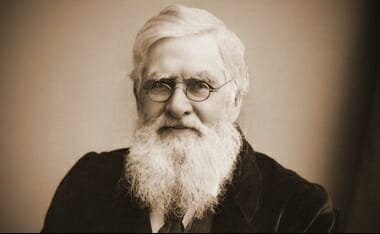
Co-Founder of “Darwinism” Embraced Intelligent Design (Updated)
One of the most renowned biologists of the nineteenth century, Alfred Russel Wallace shares credit with Charles Darwin for developing the theory of evolution by natural selection. Yet one part of Wallace’s remarkable life and career has been completely ignored: His embrace of intelligent design. “Darwin’s Heretic” is a 21-minute documentary that explores Wallace’s fascinating intellectual journey and how it sheds light on current debates. The documentary features University of Alabama at Birmingham Professor Michael Flannery, author of the acclaimed biography, “Alfred Russel Wallace: A Rediscovered Life.” You can purchase a DVD of this video plus more than 30 minutes of bonus material at http://www.darwinsheretic.com.
Here is an excellent article by David Klinghoffer at Evolution News noting that in today’s vernacular, Wallace would be considered a creationist:
At the inception of the theory of evolution, Darwin and co-discoverer Alfred Russel Wallace represented two paths forward, one headed in the end to nihilism, atheism, and despair — basically, today’s ascendant culture — the other to a wondrous and hope-giving recognition that material stuff is not all there is in the universe. As Wallace argued, a source of intelligent agency lies behind the changing façade of nature:
Wallace expounded his views at length in two scientific books near the end of his life: Man’s Place in the Universe (1903) and The World of Life (1910). He saw evidence of purpose in the functional complexity of the cell, the exquisite design of biological structures, and the rare constellation of physical factors that allows life to exist on the earth in the first place. “Everywhere, not here and there, but everywhere, and in the very smallest operations of nature to which human observation has penetrated, there is Purpose and a continual Guidance and Control.”
In our own day, Lehigh University biochemist Michael Behe and geneticist Michael Denton are prime examples of scientists who, like Wallace, see evolution as a fundamentally purposeful process. That they are regarded as beyond the pale by most current evolutionary biologists reflects the triumph of the metaphysics of Darwinism enforced by academic pressures of conformity that oppress dissent rather than consider evidence. The Church of Darwin is so narrow today that even the cofounder of the theory would have to be declared a heretic.
Let that sink in. If the co-discoverer of evolutionary theory were alive today, he would be attacked by the National Center for Science Education as a “creationist.”
[….]
It’s a sign of the times, an indication of the intellectual impoverishment of journalism and academia, that Darwin advocates are currently triumphant in convincing so many thoughtful people that evolution means Darwin, period, that Darwin is the only alternative to that ill-defined scare word, “creationism.” First Things deserves applause and thanks for reminding its readers that there is another way.
- First Things ran an article that was God Awful… apparently trying to give the other side of the issue a chance. The other side showed it’s true colors for believing in evolution: straw-men, red herrings, and supposition.
See more resources at Evolution News & Views, as well as the books, “The Heretic in Darwin’s Court: The Life of Alfred Russel Wallace” and “Alfred Russel Wallace: A Rediscovered Life,” ~ and especially the site, Alfred Russel Wallace.
I will end with this quote from a non-creationist/non-ID’er that deals with the history of the background of the suppositions involved in modern evolutionary theory that still cause “brooding” to this day:
The third reason why most naturalists around 1835 were slow to admit the fact of evolution was neither a religious nor a moral objection. It was a purely intellectual one. By now it has been almost completely forgotten, no doubt because we labor under the handicap of hindsight. But it was a well-founded objection at the time.
If someone says a certain thing has happened, and it is of a kind which has never been actually witnessed by anyone, it is reasonable to doubt what he says, if no one can think of any explanation of what he says has happened. It is on this principle that you would doubt my word, if I were to tell you (for example) that electrical storms follow me wherever I go. Now this was exactly how matters stood with evolutionism around i835.
No naturalist claimed, of course, to have ever seen a new species evolve out of an older one. Yet the evolutionists said that, whenever new species do come into existence, that is the way they do it. But what could be the explanation of one species’ giving rise to another? What causes or forces are there, already known to exist in nature, which would make one kind of grass or fish or mammal evolve into a different kind? Where is the vera causa, as they used to say, or (as we would say), where is the mechanism, which could drive this alleged process of evolution?
It should go without saying that this was not only a purely intellectual objection, but a good objection, to evolutionism. The main evidence for evolution was the fossil record, which reveals in countless instances the arrival of a new species which is closely related to an earlier one. In 1835 most naturalists regarded these new species as brought about by exercises of God’s creative power; whereas the evolutionists regarded them as developments or evolutions of the older species in question. No one had ever witnessed any of these exercises of Divine power, of course, but then exactly the same was true of evolutions of one species into another; no one had ever witnessed an instance of that, either. And then, to ascribe new species to God’s creative power is at least an explanation of a kind, though doubtless not of a very satisfactory kind. But the evolutionists, for their part, had no explanation of any kind to suggest for their alleged process of evolution.
Darwin, being a rational man, naturally felt the force of this objection, just as strongly as did his fellow naturalists who were not evolutionists. For several years around 1836, it weighed heavily on his mind. These were the very same years when the reality of evolution was being constantly impressed upon him, by the multitude of facts which would be explained if it were true. But the trouble, and a very big trouble, was that he could not think of anything which would explain evolution. That was the rub, and it seemed to Darwin that he was staring at a blank wall.
Given the intellectual circumstances of the time, it is not surprising that, just a few years later, another young naturalist found himself brought to a standstill by exactly the same blank wall. This was Alfred Wallace. Though neither of them knew it, his early intellectual career had been exactly the same as Darwin’s. On the one hand, he had become convinced of the reality of evolution; but on the other, he was altogether at a loss as to how to explain it.
Why should there be any evolution at all? Why should not the species which exist at a given time exist forever, without any new ones ever being added, or old ones subtracted? But it is not the subtractions which are the problem: presumably climatic or topographical changes, and general wear and tear, will sometimes bring about the extinction of a species. The problem is the new additions. Why should any new species ever come into existence at all? That is the mystery of the origin of species, which both Darwin and Wallace long brooded over in vain.
To ordinary observation, of course, it does not look as though new species ever do come into existence. But it is clear from the fossil record that the reality is very different. In countless thousands of instances, new species of organisms have appeared on earth. Organic nature is in fact, whatever else it is, a gigantic species-generating engine. Now, why in the world would it be that? What force can it possibly be, which drives this gigantic engine? It might reasonably be thought to be some Divine force, in view of the irresistibility of its operations, and the length of time that those operations have been going on all over the earth. But if it is not a Divine force, what force is it?
David Stove, Darwinian Fairytales: Selfish Genes, Errors of Heredity, and Other Fables of Evolution (New York, NY: Encounter Books, 1995), 24-26. (Emphasis Added)

Sister of Terrorist Told Fellow Students “Islam Is Peaceful”
It isn’t lack of economic opportunity that causes
Muslims to kill after becoming more religious.
It’s the Jihad. It’s the fact that Islam is different.
Yasmeen Abdulazeez is the sister of the Muslim who killed four Marines in Tennessee. The following statement Gateway Pundit notes is under-informed:
…Before graduating from Red Bank High School, Abdulazeez said some of the students would harass her. She said she saw that as an opportunity to dispel misconceptions about her faith.
“I’m not afraid to go straight toward them and ask them, ‘Do you really know what Islam is?’ ”Abdulazeez said. “There’s this misconception that Islam is a violent religion. Muslims are actually peaceful.”
Islam’s Latest Contributions to Peace “Mohammed is Allah’s apostle. Those who follow him are harsh to the unbelievers but merciful to one another” Quran 48:29
- 2015.07.17 (Damaturu, Nigeria) – A 10-year-old girl and elderly woman are strapped with suicide vests and sent onto a rival prayer ground.
- 2015.07.16 (Mihtarlam, Afghanistan) – Two children are among eight people massacred during a Taliban ambush on their van.
- 2015.07.15 (Baga, Nigeria) – Eight civilians are summarily shot in the back of the head by Sharia activists along a highway.
- 2015.07.15 (Deir Ezzor, Syria) – Eight civilians are crucified by the caliph for breaking Ramadan fasting rules.
- 2015.07.14 (Tetewa, Chad) – Islamists reach an island community and massacre six children.
- 2015.07.13 (Maidan Wardak, Afghanistan) – A father and son are aerated Religion of Peace ball bearings.
And from the peanut gallery, via the guys here to protect us, comes this jaw dropper of a statement via Jihad Watch. Tom Fuentas’ short bio follows the video:
(Wiki) Tom Fuentes served as an Assistant Director of the Federal Bureau of Investigation (FBI) from 2004 until his retirement in November 2008. His 29-year career in the FBI included 11 years as a member of the U.S. Government’s Senior Executive Service. Mr. Fuentes directed the FBI Office of International Operations, which included offices at FBI Headquarters in Washington, D.C. and 76 Legal Attaché offices in U.S. Embassies and Consulates worldwide. He was responsible for FBI Special Agents and Analysts assigned to the Interpol Washington, D.C. National Central Bureau office, United Nations, and General Secretariat office in Lyon, France as well as Europol Headquarters in The Hague, Netherlands. He also served as a member of the Executive Committee of Interpol from 2006 through 2009. Interpol has 190 member countries.
Here are some entrees from the Muslim Terrorists blog, via Pamela Geller:
The killer of four U.S. Marines in Chattanooga maintained a short-lived blog that hinted at his religious inner life. Mohammad Youssef Abdulazeez’s blog had only two posts, both published July 13 and written in a popular style of Islamic religious reasoning. The first post was entitled “A Prison Called Dunya,” referring to the temporal world. In it, Abdulazeez uses the hypothetical example of a prisoner who is told he would be given a test that would either take him out of his earthly prison—or send him into a more restrictive environment.”I would imagine that any sane person would devote their time to mastering the information on the study guide and stay patient with their studies, only giving time for the other things around to keep themselves focused on passing the exam,” Abdulazeez wrote. “They would do this because they know and have been told that they will be rewarded with pleasures that they have never seen.”This life is that test, he wrote, “designed to separate the inhabitants of Paradise from the inhabitants of Hellfire.” The second post is called “Understanding Islam: The Story of the Three Blind Men.” It suggests Abdulazeez felt his fellow Muslims had a “certain understanding of Islam and keep a tunnel vision of what we think Islam is.” He uses the example of blind men who feel an elephant but can’t quite tell what the creature is. He says Muslims have a similar understanding of the earliest companions of the Prophet Muhammad. That they were “like priests living in monasteries is not true,” he says; rather they were “towards the end of the lives were either a mayor of a town, governor of a state, or leader of an army at the frontlines.” “We ask Allah to make us follow their path,” Abdulazeez wrote. “To give us a complete understanding of the message of Islam, and the strength the live by this knowledge, and to know what role we need to play to establish Islam in the world.”— Katie Zavadski
In other news…
an Idaho Muslim Refugee Planned Suicide Bombing on U.S. Troops, and he trained others as well.
I went to a family event a few years back that was in Boise, Idaho. At the event, in another part of facility, were Sudanese Muslims getting off buses [I could tell because of the clothes the men and women were wearing]. I asked one of the workers what was going on, they said Boise was one of the cities that take in these “refugees.” I remember thinking to myself that this policy was gonna bite them in the ass…. um.
Creeping Sharia continues to note:
Idaho can still expect to receive more Muslim refugees as churches and other humanitarian organizations receive hefty commissions from the federal government to dump them on American communities. While the State Department insists it conducts rigorous background checks on refugees, determining whether or not a Third World Muslim from a war-torn state has terrorist connections is difficult.
The Washington Times reports that a southern Idaho refugee center expects to receive 300 more Muslim refugees from Syria in 2015. Taxpayers will not be notified when the refugees, who will live off their money and strain school district budgets with their inability to speak English or perform basic academic tasks, arrive in their town. Why they should be expected to embrace an alien presence of Syrians who will soak up resources meant to take care of their children and vulnerable members of the community is never explained.
What a crazy, peaceful world we live in. (As I *pound* my head on the keyboard.)

99% of the World Agrees With Obama ~ Occupy Foreign Policy?
Occupy Foreign Policy?… for the first time I find myself in the 1% — I wish it was monetarily.
“I’m hearing a lot of talking points being repeated that this is a bad deal. That this is a historically bad deal. This will threaten Israel and threaten the world and threaten the United States. There’s been a lot of that. What I haven’t heard is what is your alternative. If 99% of the world community and the majority of nuclear experts look at this and say ‘This will prevent Iran from getting the bomb,” and you are arguing either that it does not, or even if it does it’s temporary, or because they are going to get a windfall of their accounts being unfrozen they’ll cause more problems, then you should have some alternative to present.“

W.A.S.P.’s Not Allowed to Complain (Bonus: Machosauce)
What a great post by Gay Patriot:
- Gay people whine that they feel “emotionally raped” because Christian bakeries recommend they go elsewhere for their wedding cakes. Result: Christian businesses are destroyed by massive Government fines.
- Muslims whine that a stewardess would only pour them a can of Diet Coke instead of handing them the whole can. Result: Airline apologizes and punishes stewardess.
- Black people whine that the sight of a Confederate Flag hurts their feelings. Result: Governments and businesses ban the sale or display of the Confederate flags, even at Civil War Historical sites like Gettysburg and Fort Sumter. Blacks go on to demand the complete eradication of Confederate History.
- Illegal Immigrants whine that they should be allowed to break the law with impunity. Result: Leftist Progressives create ‘Sanctuary Cities.’
…read the rest to see what happens when WASP’s whine (WASP is an acronym for: White Anglo-Saxon Protestants).
BONUS!

Dinesh D’Souza’s “Atrocities Compared” Zinger
The above took place at Caltech on December 9th, 2007 ~ between Dinesh D’Souza and Michael Shermer. I am posting this anew for a discussion I am in where I received the following challenge:
- So you deny inquisitions which really happened?
I respond:
One doesn’t have to deny something in order to k-n-o-w about the truth of something. Firstly, I bet you do not know this but the inquisitions were started to stop “monkey courts” sentencing people to death. Secondly, here are some stats you probably are not aware of. And this isn’t to belittle you… reading history is a hobby of mine. Here they are:
✦ The Inquisition was originally welcomed to bring order to Europe because states saw an attack on the state’s faith as an attack on the state as well.
✦ The Inquisition technically had jurisdiction only over those professing to be Christians.
✦ The courts of the Inquisition were extremely fair compared to their secular counterparts at the time.
✦ The Inquisition was responsible for less than 100 witch-hunt deaths, and was the first judicial body to denounce the trials in Europe.
✦ Though torture was commonly used in all the courts of Europe at the time, the Inquisition used torture very infrequently.
✦ During the 350 years of the Spanish Inquisition, between 3,000-5,000* people were sentenced to death (about 1 per month).
✦ The Church executed no one.
See more at my site: https://religiopoliticaltalk.com/spanish-inquisition/
There was a change of subject immediately following the above posted historical facts/items, to which I asked for the following minimalist admission:
Before I go on… I must ask for some honesty. And it requires a minimum admission from you — at least. The reason being is that I do not mind talking about topics in a dialogue fashion. But often times I find people move from one topic to the next, never slowing down to let new information sink in. And so the learning process is hampered in lieu of trying to “win” a point or position held for many years. [In many cases, wrongly.]
So while I have a decent sized home library and love [to discuss] politics, religion, philosophy, science, history, and theology… I also do not want to waste my time in conversation where people do not add new items of understanding to their thinking. In your case, I think it is the historical bullet points to follow that would offer a modicum of reasonableness allowing me to continue.
At the minimum would you say that you did not know that the Inquisitions…
➤ killed 0.769 people a month [yes, that is a point] over it’s 300-year period;
➤ that it was primarily secular;
➤ and was implemented to stop kangaroo courts.
If you would a-t l-e-a-s-t admit that you thought these were different but now can see that maybe, just maybe, you heard this information through word-of-mouth and just ran with it instead of testing your own position to the panoply of history… then we can continue the conversation. (Pride is an S.O.B.)
- 2 of 4
- « Previous
- 1
- 2
- 3
- 4
- Next »
